JFK Files - The Angleton Angle - Part Seven
With Trump Talking Of Invading Panama To Regain The Panama Canal, It Might Be Time To Revist Kennedy's Plan To Invade Cuba In 1962
Now that President-Elect Donald Trump is rattling the sabers about the Panama Canal, implying a possible invasion, it might be time to look at a book I wrote on the topic five years ago about Kennedy’s planned invasion of Cuba in the Summer of 1962, called Op Plan 314.
From Google’s New Gemini 2.0 AI Search -
Context:
Post-Bay of Pigs: The disastrous Bay of Pigs invasion in April 1961 was a major embarrassment for the Kennedy administration and fueled a determination to remove Fidel Castro from power.
Operation Mongoose: This was a covert CIA program aimed at destabilizing the Cuban government and potentially assassinating Castro. However, it was largely ineffective.
Soviet Military Buildup: By 1962, the Soviet Union was secretly sending troops, equipment, and eventually nuclear missiles to Cuba, increasing the perceived threat to the United States.
Cuban Missile Crisis: The discovery of Soviet missiles in Cuba in October 1962 brought the world to the brink of nuclear war and significantly intensified the pressure to act.
The Plan (OPLAN 314 and 316):
Massive Force: The plan, known variously as OPLAN 314 and OPLAN 316, called for a full-scale military invasion involving a force initially estimated at around 180,000 to over 250,000 troops, including Army, Navy, Air Force, and Marine personnel. Some estimates even suggested troop numbers above 400,000. This represented a truly enormous commitment of military resources.
Air Superiority: The operation would begin with a massive air campaign to destroy Cuban air defenses, military installations, and communication networks. This would involve hundreds of sorties by U.S. fighter jets and bombers.
Amphibious and Airborne Landings: The plan envisioned large-scale amphibious landings, similar to those in World War II, along with airborne assaults to seize key strategic locations like airfields and ports. These were to take place at several different points on the coast in the South and in the East.
Rapid Advance: The goal was to quickly overwhelm Cuban defenses and capture Havana and other major cities, leading to the overthrow of the Castro regime.
🧠 DETAILED SUMMARY
George Webb revisits the abandoned 1962 U.S. invasion of Cuba, known as OPLAN 314/316, as a lens through which to interpret the Cuban Missile Crisis, CIA deception, and current Trump-era military proposals—specifically an invasion of Panama.
He argues that John F. Kennedy’s planned full-scale invasion would have crushed the CIA-aligned Luciano-Lansky drug trafficking network and that the CIA fabricated intelligence about Soviet missiles in Cuba to block Kennedy’s action, originally created by Paul Helliwell with the Helliwell Plan.
According to Webb, figures like James Angleton, Richard Bissell, and IB Hale used Lee Harvey Oswald to leak the invasion plans to the Soviets and then doctored U-2 photos to manipulate Kennedy into canceling the assault.
Webb draws parallels between the 1962 Cuba invasion and Trump's alleged Panama plan, claiming both rely on flawed intelligence, this time about Chinese fentanyl transshipment. He suggests that the real opioid trafficking point is Miami, stemming from the post-WWII Helliwell Plan, which involved CIA collaboration with the mob.
The CIA seemed to be running Operation Mongoose out of Miami’s JM/WAVE Station to protect the Helliwell drug running for mobsters rather than its stated objectives to assassinate Fidel Castro.
Writer Dan Hopsicker also informed me that Paul Helliwell created CIA proprietary Red Sunset for a drug-running operation from Cuba.
The article outlines the logistics of OPLAN 316, including massive airborne assaults by the 82nd and 101st Airborne Divisions, a supporting amphibious landing by the 1st Armored Division, and the strategic role of Special Operations Command (SOCOM). Webb contends that the historical record, especially the unreleased JFK files, will reveal that Angleton and Bissell betrayed Kennedy by leaking his invasion plans to prevent the destruction of their illicit funding networks.
👤 PEOPLE PROFILES
John F. Kennedy
35th U.S. President who authorized planning for a full-scale invasion of Cuba in 1962 under OPLAN 314/316.
Webb asserts JFK was deceived by the CIA into canceling the operation after being shown doctored U-2 reconnaissance photos.
His resistance to CIA influence over military and drug trafficking operations may have contributed to his assassination.
Robert F. Kennedy
Attorney General and key advisor to JFK during the Cuba crisis, sharing his brother’s skepticism of the CIA.
Webb links RFK to early attempts to dismantle CIA-mafia drug operations and views his later assassination as connected to those efforts.
Acted as a firewall between JFK and Deep State elements.
Donald Trump
U.S. President-elect referenced as considering a modern military intervention in Panama, allegedly based on faulty intelligence about Chinese fentanyl smuggling.
Webb warns that Trump may be misled in a similar way to Kennedy, drawing a historical parallel with the aborted Cuba invasion.
He calls on Trump to declassify the final JFK files to expose the full truth of Angleton’s and Bissell’s actions.
Peter Navarro
Trump economic advisor, speculated by Webb to be behind the Panama invasion proposal based on flawed drug intelligence.
Allegedly misidentifies Panama as the primary opioid transshipment hub rather than Miami.
Webb positions him as repeating historical intelligence errors.
James Angleton
CIA Counterintelligence Chief who, according to Webb, used Oswald to leak U.S. invasion plans (OPLAN 314/316) to Soviet contacts.
Worked with Bissell to manipulate Kennedy using false intelligence from U-2 photos.
Central figure in the alleged sabotage of Kennedy’s Cuba invasion and the broader effort to retain CIA control over foreign operations.
Richard Bissell
CIA operations executive responsible for the U-2 program and the Keyhole (Corona) satellite program.
Webb argues he leaked Kennedy’s invasion plans and manipulated reconnaissance intelligence to stop the operation.
Viewed as the primary engineer behind the CIA’s Cold War deception and control of aerial surveillance.
IB Hale (Insall Bailey Hale)
Former FBI agent and CIA-linked sniper, later CEO of General Atomics, who allegedly placed Oswald at Jaggars-Chiles-Stovall in Dallas prior to the Cuban Missile Crisis.
Webb implicates Hale in orchestrating Oswald’s use as a false defector and photo analyst.
Also linked to post-assassination cover-ups and targeted killings of witnesses.
Lee Harvey Oswald
Alleged JFK assassin, but portrayed here as a CIA “false defector” used to leak sensitive plans and manipulate Cold War geopolitics.
Webb claims Oswald met Soviet agent Valery Kostikov in 1962 (not 1963) and was central to the CIA's disinformation campaign against JFK.
Used by Angleton and Bissell to justify the shift from U-2 aircraft to satellite surveillance.
Valery Kostikov
Soviet KGB officer stationed in Mexico City, believed to be Oswald’s contact during his intelligence mission.
Webb asserts Oswald’s first meeting with Kostikov occurred in 1962, contradicting official timelines.
Represents the channel through which CIA plans were allegedly leaked to the Soviets.
John O’Loughlin
Son of FBI agent Thomas O’Loughlin (aka “McDuff”) and collaborator with Webb in researching Cold War military operations and the Deep State.
Co-author of Let’s Call Him McDuff, which examines STRICOM’s role in Cold War planning and the sabotage of Kennedy-era reform.
Provided insights into the role of the 1st Armored Division and SOCOM during the Cuba planning stages.
Thomas F. O’Loughlin (McDuff)
Former FBI agent and STRICOM liaison with detailed knowledge of Cold War military logistics.
His work revealed internal planning for OPLAN 316 and the movement of U.S. forces during the Cuban Missile Crisis.
Webb holds him up as a whistleblower on the Kennedy-era Deep State.
🏛️ ORGANIZATION PROFILES
Central Intelligence Agency (CIA)
Depicted as the primary saboteur of Kennedy’s Cuba invasion plans and the orchestrator of false intelligence campaigns.
Webb alleges the CIA leaked OPLAN 314/316 and used doctored U-2 photos to manipulate presidential decision-making.
Tied to drug trafficking operations via the Helliwell Plan and the Luciano-Lansky network.
U.S. State Department
Responsible for diplomacy but, in Webb’s narrative, often manipulated or bypassed by CIA covert operations.
Publicly agreed not to invade Cuba as part of the Missile Crisis resolution.
Its treaties regulating space (Kármán Line) were strategically avoided by the CIA using suborbital intelligence tricks.
Department of Defense (DoD)
Coordinated OPLAN 314/316 but often manipulated by the CIA regarding intelligence data and invasion timing.
Controlled elite units like the 82nd Airborne and 1st Armored Division for the planned assault.
STRICOM, under DoD, was in charge of large-scale military responses in the Western Hemisphere.
Special Operations Command (SOCOM)
Based in Tampa, Florida, and successor to STRICOM, which was involved in Cuban invasion planning.
The 1st Armored Division was to be staged nearby for amphibious deployment.
Still central to modern U.S. rapid deployment strategy, including scenarios like the hypothetical Trump Panama invasion.
82nd Airborne Division
Elite U.S. Army unit tasked in OPLAN 316 with seizing airfields near Havana to enable rapid force buildup.
Their targets included San Antonio de los Baños and Campo Libertad.
Would have operated alongside the 101st Airborne and Marine Corps units in joint air-land operations.
101st Airborne Division
Paratrooper division supporting the 82nd in seizing and holding critical terrain near Havana.
Expected to provide inland disruption while armored and amphibious units arrived by sea.
Their operation would have been synchronized with massive U.S. air support and naval firepower.
1st Armored Division (“Old Ironsides”)
Heavy mechanized division based at Fort Hood, Texas, planned to deploy by sea for the main amphibious assault.
Would have reinforced the airborne divisions, exploiting their breakthroughs to secure Havana and surrounding areas.
Its movement and deployment represented a massive logistical challenge and public visibility.
Helliwell Plan
Covert post-WWII CIA operation developed by Paul Helliwell, using mafia figures like Luciano and Lansky to establish global narcotics routes.
Webb asserts it connected Miami to Cuba as the true drug transshipment hub, not Panama.
The network was protected by CIA operatives and financially benefited from Havana’s status as a drug and vice hub.
Chicago Outfit
Mafia syndicate that inherited control of the narcotics trade from the Luciano-Lansky network after 1973.
Webb suggests their dominance explains the resistance to Kennedy’s planned Cuba invasion, which would have cut off their supply lines.
Allegedly worked with elements in the CIA to ensure the survival of the trade routes.
Why it Didn't Happen:
Cuban Missile Crisis Resolution: The Cuban Missile Crisis was ultimately resolved through a negotiated agreement between the U.S. and the Soviet Union. The Soviets agreed to remove their missiles, and the U.S. secretly agreed to remove its Jupiter missiles from Turkey, and perhaps most importantly for this issue, publicly agreed to not invade Cuba.
Concerns about Soviet Response: The full scale of Soviet forces in Cuba was not completely known at the time of the Bay of Pigs, but by the Missile Crisis, it had become clear that the invading US force would face more than just the Cuban military. There was significant concern that an invasion could trigger a wider war with the Soviet Union, potentially escalating to a nuclear conflict.
Casualty Estimates: While exact numbers are debated, estimates of potential U.S. casualties in a full-scale invasion were high, potentially in the tens of thousands. The Cuban defenders were more numerous, better armed and supplied, and more motivated than in the Bay of Pigs fiasco. They would also have the advantage of interior lines of communication and knowledge of the terrain.
International Condemnation: An invasion likely would have faced strong condemnation from many countries, particularly in Latin America.
Significance:
Demonstrates Kennedy's Resolve: The existence of this plan shows how seriously the Kennedy administration took the threat posed by Castro's Cuba and how far it was willing to go to remove him from power.
Highlights the Dangers of the Cold War: The potential for this invasion to escalate into a wider conflict underscores the extreme dangers of the Cold War and the constant risk of miscalculation.
Informs the Cuban Missile Crisis Narrative: Understanding the invasion plan helps to contextualize the decisions made by Kennedy and his advisors during the Cuban Missile Crisis. The very real possibility of a U.S. invasion likely played a role in both Soviet and Cuban actions.
In Conclusion:
The planned invasion of Cuba in 1962 was a massive military operation that was seriously considered but ultimately never carried out. The resolution of the Cuban Missile Crisis and the potential consequences of a full-scale war prevented its execution. It remains a fascinating "what if" of Cold War history and a stark reminder of the precarious balance of power during that era.
I have known the son of one of the key planners of the Cuba Invasion for the past seven years, John OLoughlin, and I have written a book about his father with his blessings called “Let’s Call Him McDuff”.
I believe studying the 1962 proposed Invasion of Cuba, OP Plan 314 and OP Plan 316, will inform President-Elect Trump’s decision to invade Panama as George Bush did in 1989.
https://en.wikipedia.org/wiki/United_States_invasion_of_Panama
A key part of the Trump logic is that China is providing illegal Oxycontin for the opioid crisis and overdoses along with opiates like Fentanyl, and the key point of transshipment is Panama. The Trump Plan for Panama, which I believe comes from adviser Peter Navarro, is based on faulty intelligence that Panama is the key transshipment point for US opioids.
As I outlined in my 2019 book, “Let’s Call Him McDuff”, the key narcotics transshipment point for the US is through the Port of Miami, since the 1947 Helliwell Plan the CIA created with the Lucky Luciano and Meyer Lansky Commission. The Chicago Mob later rolled up this drug connection, otherwise known as the Outfit, in 1973.
Kennedy’s 1962 strike at the heart of Cuba in Havana with the 82nd Airborne would have eliminated the Luciano-Lansky-CIA cash cow, so the CIA provided false intelligence about Russian missiles in Cuba to stop Kennedy’s Invasion. After having just left Russia a month earlier, I have covered how Insall B. Hale installed one Lee Harvey Oswald into the U-2 photo interpretation DoD contractor Jaggars in Dallas. This appointment of Oswald by Hale occurred one week before the Cuban Missile Crisis, and its intended purpose was carried out to provide false aerial photo intelligence to Kennedy.
History will show that Richard Bissell and James Angleton leaked OP Plan 316 to the Cubans in advance and then provided doctored U-2 photographs to the National Security Council to be presented to President Kennedy in the Oval Office. (Kennedy hated the Situation Room in the basement of the White House).
Kennedy feared another Bay of Pigs because OP Plan 316 leaked, and he feared a possible nuclear exchange with Russia to defend Cuba. History will show that Angleton used Oswald to leak OP Plan 316 to the Russians. Oswald’s first meeting with Valery Kostikov was in 1962, not 1963, as is currently shown in the JFK documents. Trump needs to declassify the last 9% of JFK documents to show how Angleton leaked OP Plan 314 and OP Plan 316 to the Russians through Oswald.
Outlined below are more details of the 82nd Airborne’s planned actions around Havana.
Within OP Plan 316, the 82nd Airborne Division had several key objectives, primarily focused on securing airfields to enable the rapid buildup of U.S. forces and supplies. Here's what we know about their specific targets:
San Antonio de los Baños Airfield: This was one of the most crucial targets. It was a major Cuban Air Force base located southwest of Havana and was considered essential for establishing U.S. air superiority. The 82nd Airborne, possibly in concert with the 101st, was tasked with seizing and securing this airfield quickly to allow for the landing of heavier equipment and troops.
Campo Libertad (later, Campo Columbia): This was another vital airfield, closer to Havana. While perhaps not as critical for the initial landings, it would serve as a major hub for operations into Havana. Along with the 101st Airborne Division, the 82nd may also have had a role in securing this airfield.
Other Airfields and Key Locations: The 82nd Airborne, in addition to the 101st, would likely have been assigned additional targets beyond just these two primary airfields. These might have included smaller airstrips, key road junctions, bridges, and potentially even port facilities to further facilitate the flow of troops and supplies.
Important Considerations:
Contingency and Flexibility: Military plans are rarely static. OPLAN 316, like all operational plans, would have had built-in flexibility and contingency plans. The 82nd Airborne's specific objectives could have shifted depending on the evolving situation on the ground.
Secrecy and Deception: Elements of surprise and deception would have been crucial. The exact timing and location of airborne assaults would have been closely guarded secrets.
Joint Operations: The 82nd Airborne would not have been operating in isolation. Their actions would have been closely coordinated with other units, including the Marine Corps landing forces, Air Force units providing air support, and Navy ships providing naval gunfire support.
You will also see from my 2019 book graphic that I have the 1st Armored Division from Ft. Hood, which was going to be pre-positioned near the current Special Operations Command (SOCOM) in Tampa, Florida. The SOCOM Tampa base was the head of STRICOM (Strike Command) with Thomas O’Loughlin, later shown to be interfacing with STRICOM in 1967 in my book. You can see 71,000 Marines were planned for the attack, with 29,000 Army soldiers in reserve.
The 1st Armored Division’s role was to consolidate positions taken in the initial assault in Mariel and Havana. Now swarming drones launched from US Navy destroyers would probably swarm the site soon after initial rocket attacks to neutralize those potential Russian missile sites.
In Operation Plan 316, the planned invasion of Cuba in 1962, the 1st Armored Division ("Old Ironsides") was designated to come from its home station at Fort Hood, Texas.
Here's what we know about the 1st Armored Division's role and deployment plan:
Home Station: At the time, the 1st Armored Division was based at Fort Hood, Texas, where it conducted training and maintained its readiness for deployment.
Staging Area: For OPLAN 316, the division was to move from Fort Hood to a staging area in Florida, most likely the Tampa area, to prepare for the amphibious invasion. This move would have involved a massive logistical effort, transporting troops, tanks, and other equipment by rail, road, and potentially air. This would not have been a surprise move, as an enormous amount of war material would be impossible to hide from the public.
Part of the Main Invasion Force: The 1st Armored Division was a key component of the planned ground invasion force. Its heavy tanks and firepower would have been crucial for overcoming Cuban defenses, particularly in open terrain.
Amphibious Assault: The division's equipment and personnel would have been loaded onto amphibious transport ships in Florida and then landed on the beaches of Cuba as part of the main invasion force. This is distinct from the Airborne forces that would have landed inland.
Mission: Once ashore, the 1st Armored Division's mission would have been to exploit breakthroughs achieved by the initial assault forces, rapidly advance inland, engage and destroy Cuban armored and mechanized units, and support the capture of key objectives.
Significance:
Heavy Firepower: The inclusion of a full armored division demonstrates the scale and intensity of the planned invasion. The 1st Armored Division's tanks would have provided a significant advantage in firepower and mobility.
Logistical Challenge: Moving an entire armored division from Texas to Florida and then onto ships for an amphibious landing would have been a massive logistical undertaking, requiring extensive planning and coordination.
Combined Arms Operation: OPLAN 316 envisioned a combined arms operation, with the 1st Armored Division working in conjunction with infantry, airborne, Marine, air, and naval forces to achieve a swift victory.
Important Note:
OPLAN 316 was never executed. The Cuban Missile Crisis was resolved peacefully, and the planned invasion was averted. However, the plan's details, including the 1st Armored Division's role, provide valuable insight into the military thinking and preparations of the time.
In conclusion, the 1st Armored Division, a key component of the planned invasion force in OPLAN 316, was slated to deploy from its home station at Fort Hood, Texas, to a staging area in Florida before embarking on amphibious assault ships for the invasion of Cuba.









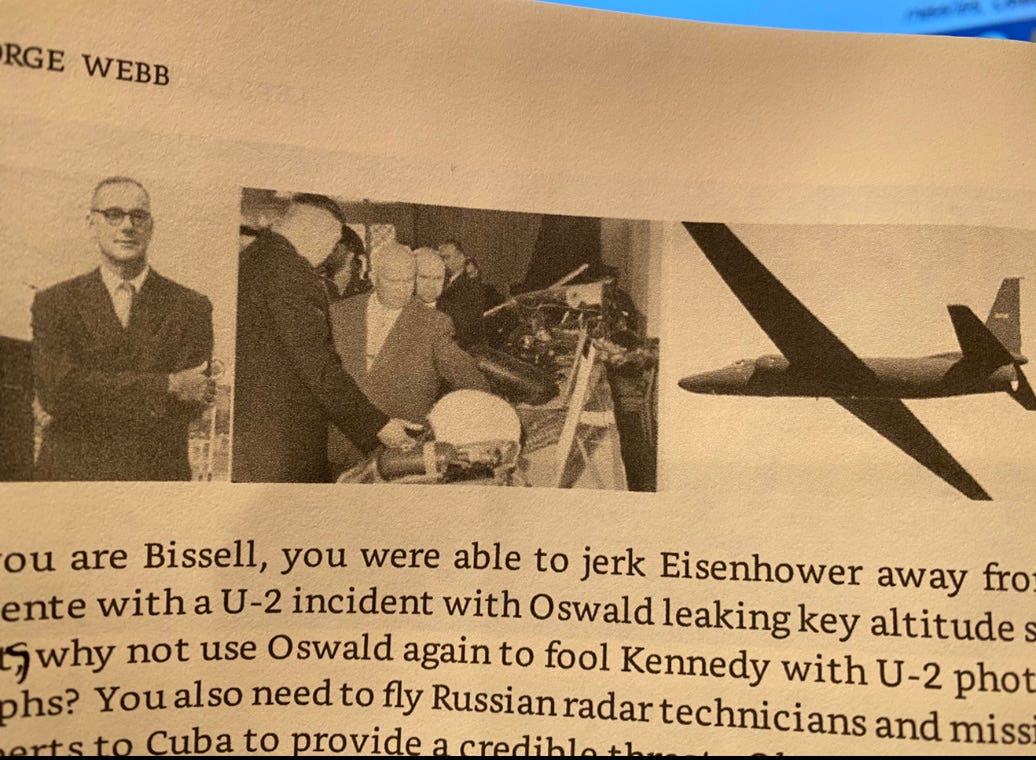
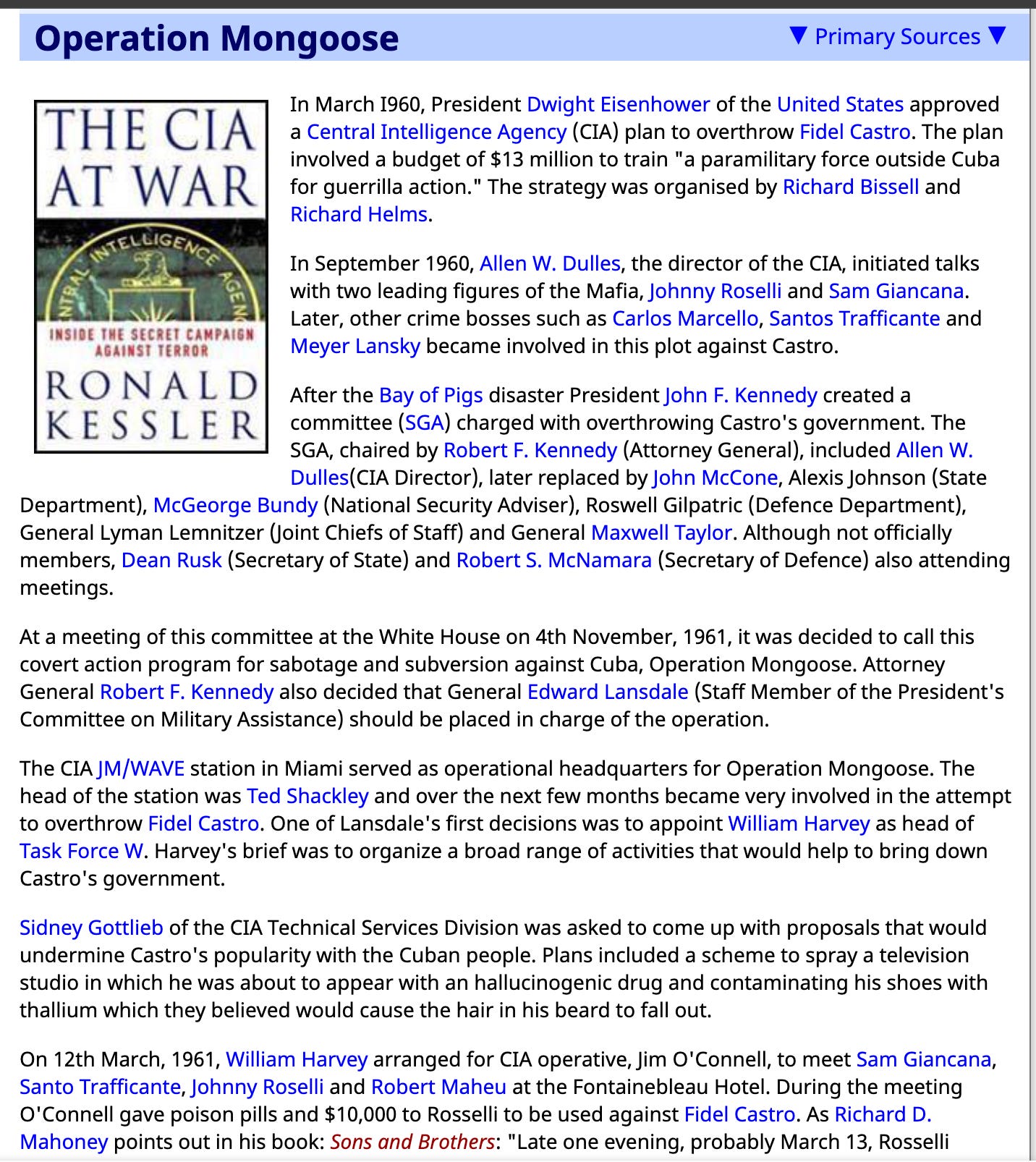

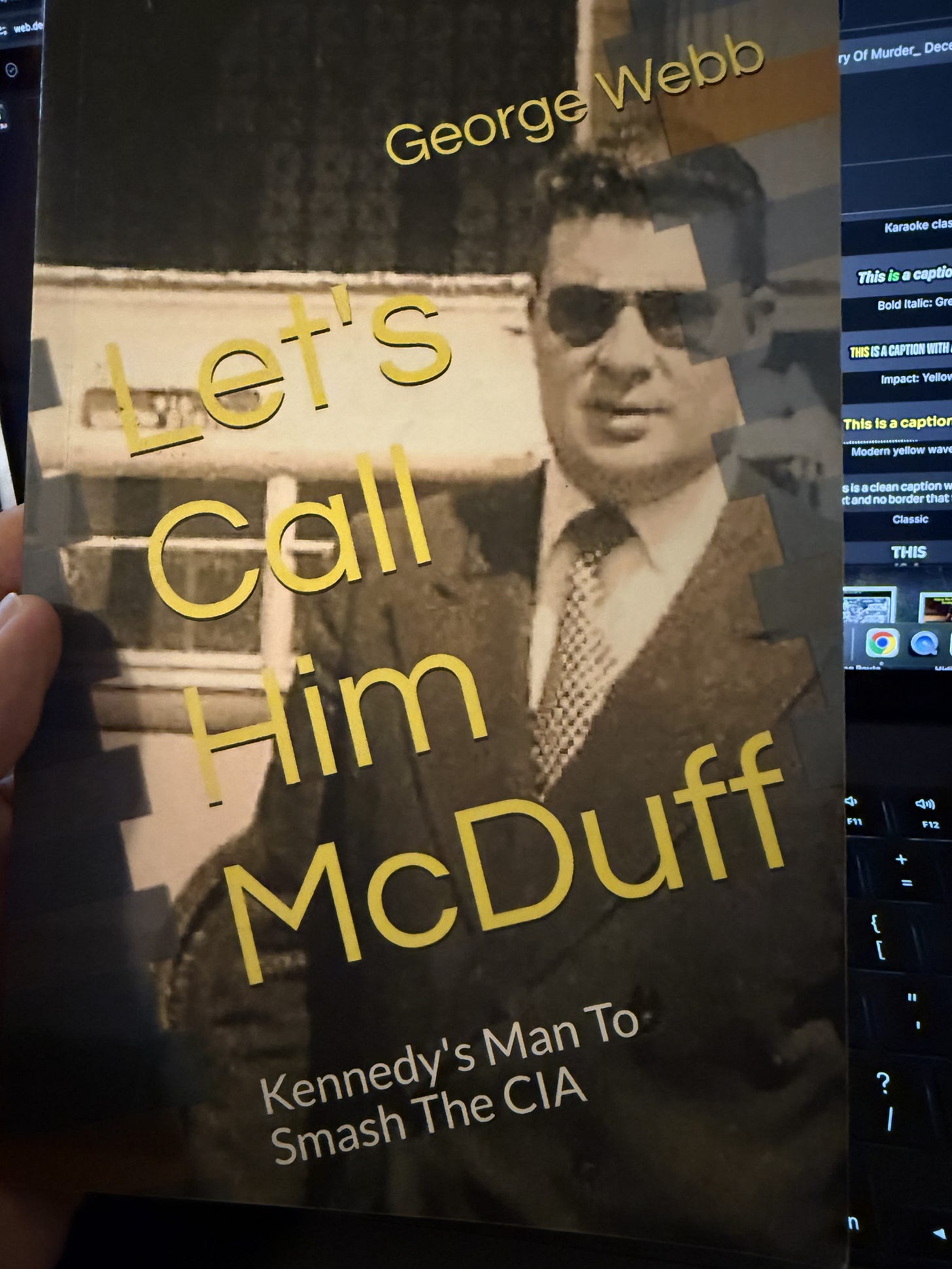

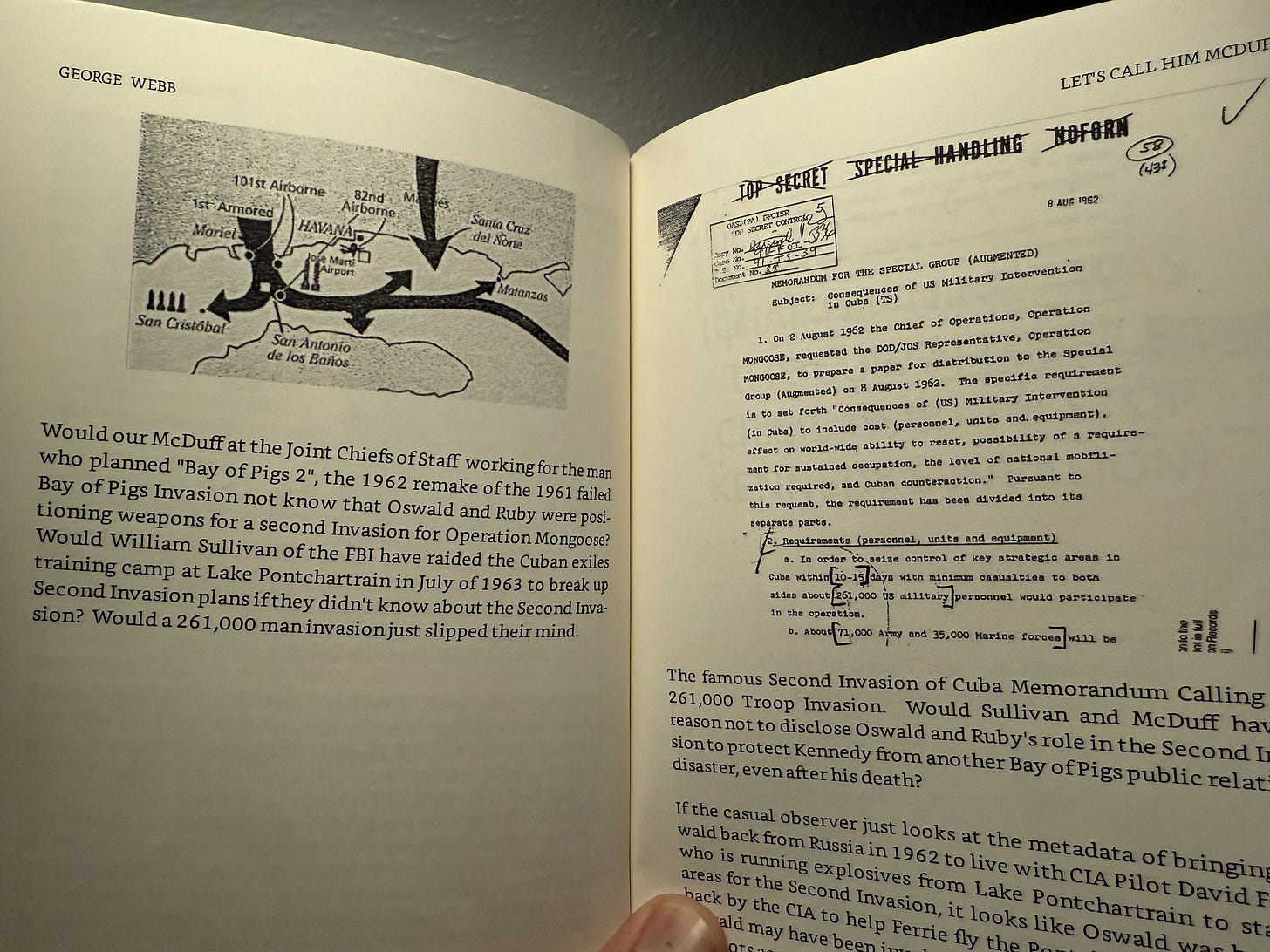
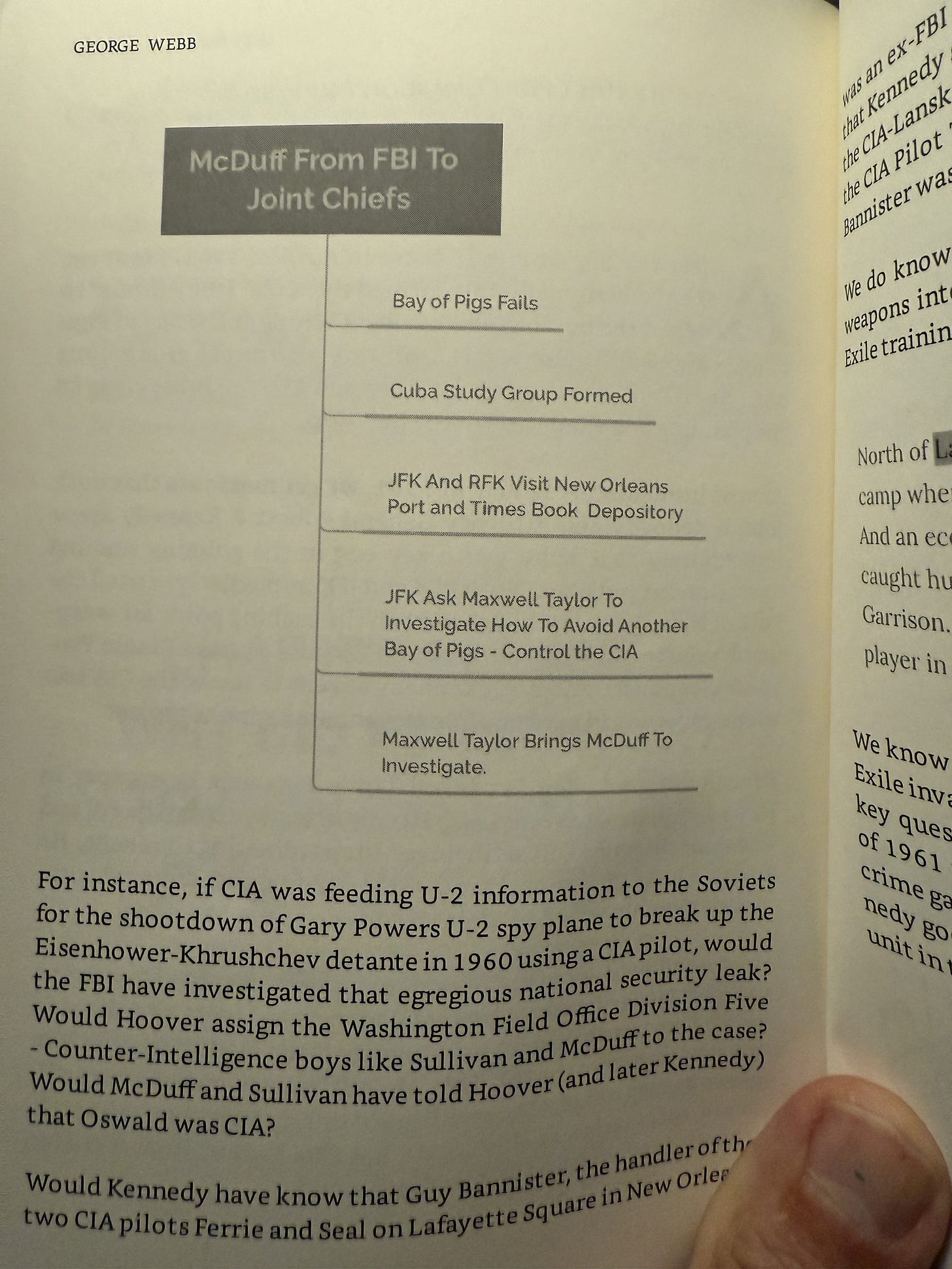
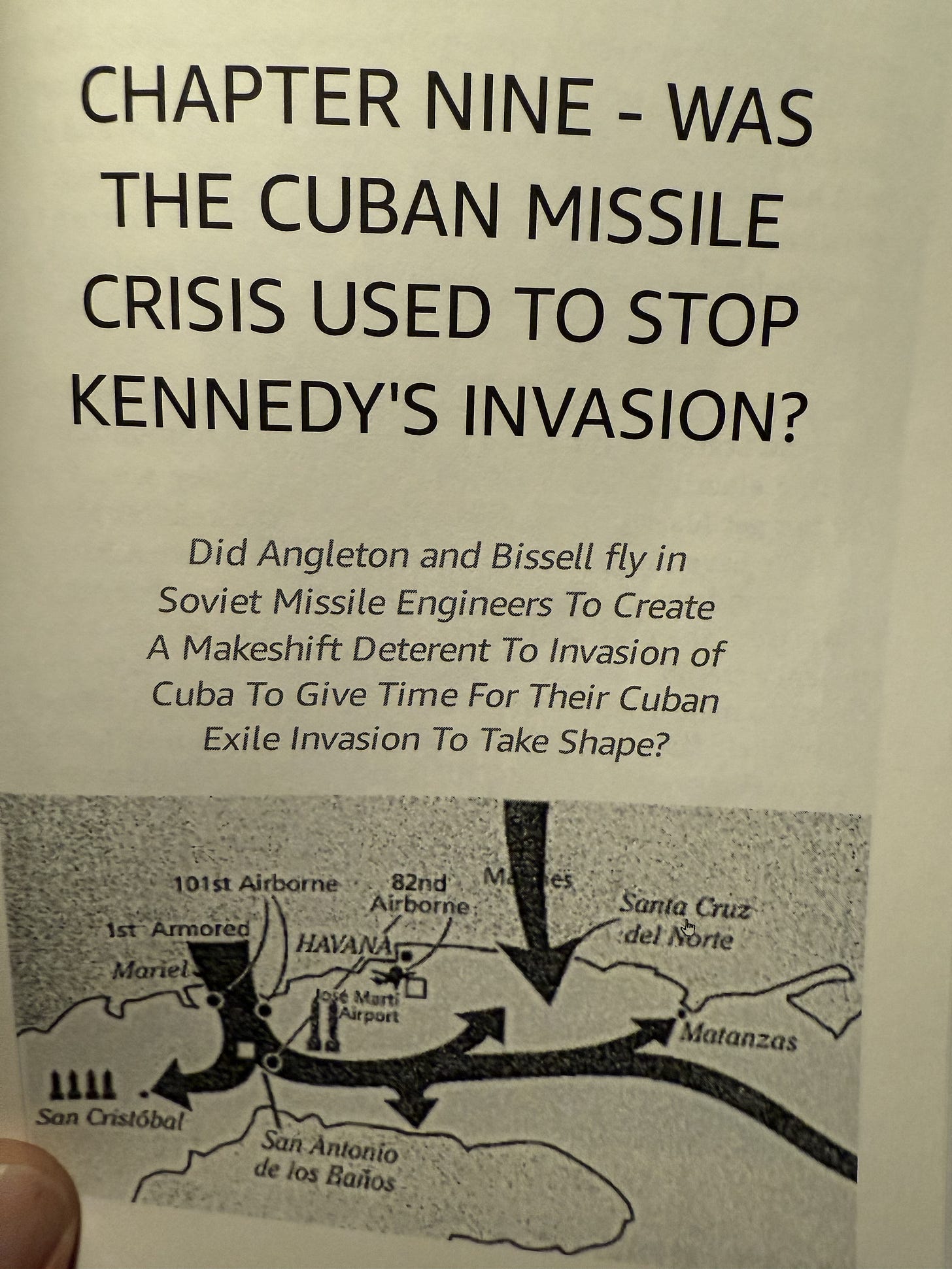
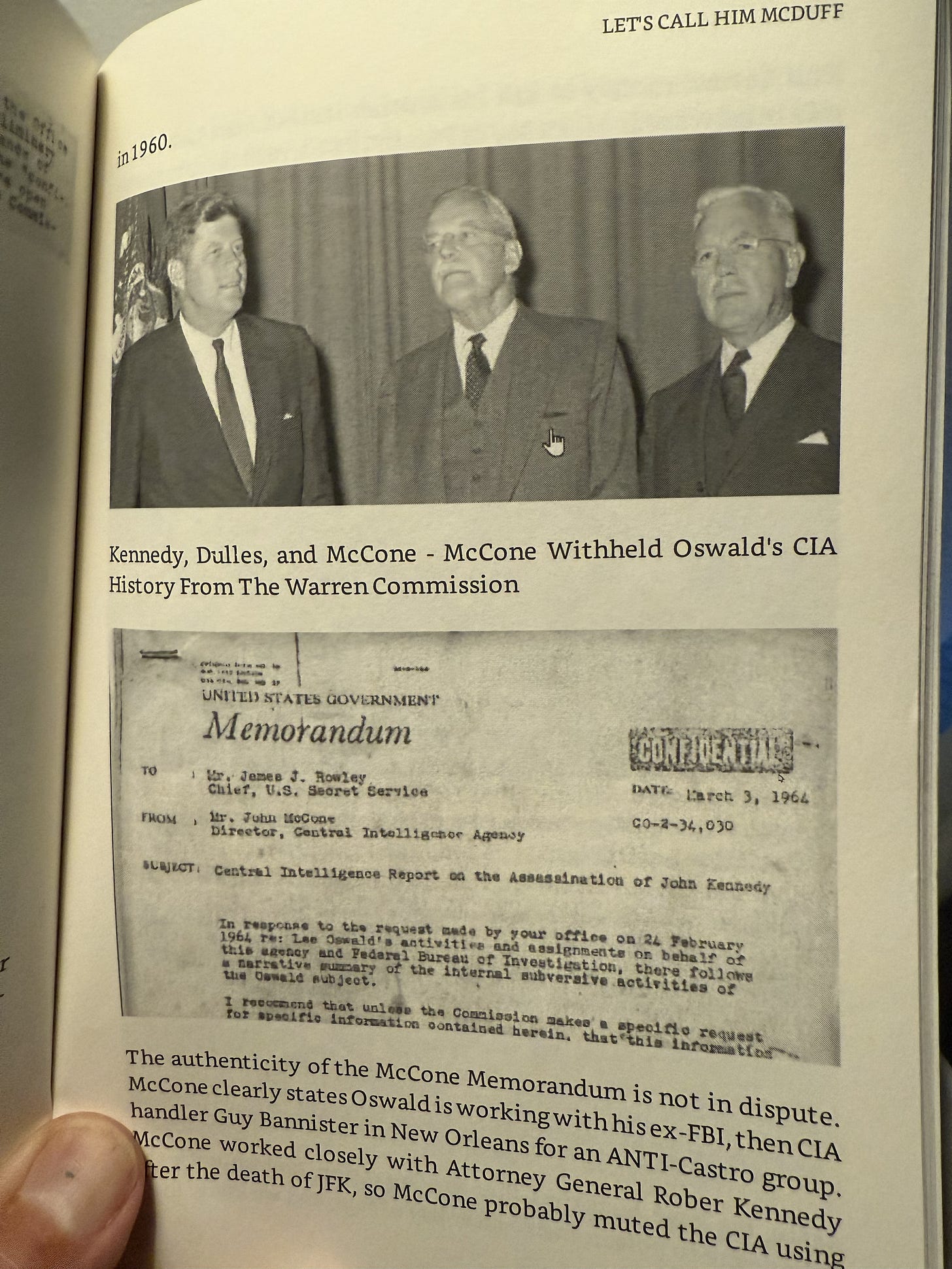




Brilliant. Just about everything we have been taught -- about anything to do with the important events in history, and current events -- is a lie. This is very important information for those of us who lived through the CMC. The CIA is a cancerous growth on the body of humanity.
The 20 Dec 1989 invasion of panama resulted in the arrest of noriega. Prior to that arrest the (uncontrolled) internet had various articles declaring that Noriega had proof of GW Bush's involvement in the drug trade and money laundering. That invasion , as with the 24 Oct 1983 invasion of Grenadad, demonstrated that the president can invade anywhere he wants and the constitution's requirement for a vote from Congress is moot. The fentanyl issue is more difficult, even if panama was a prime import source the stuff would simply be imported elsewhere.